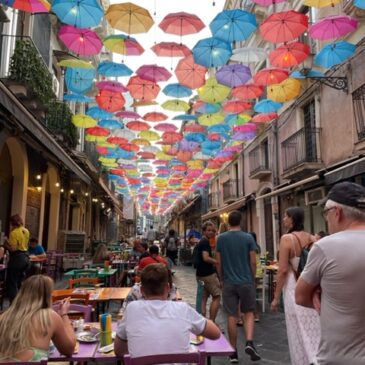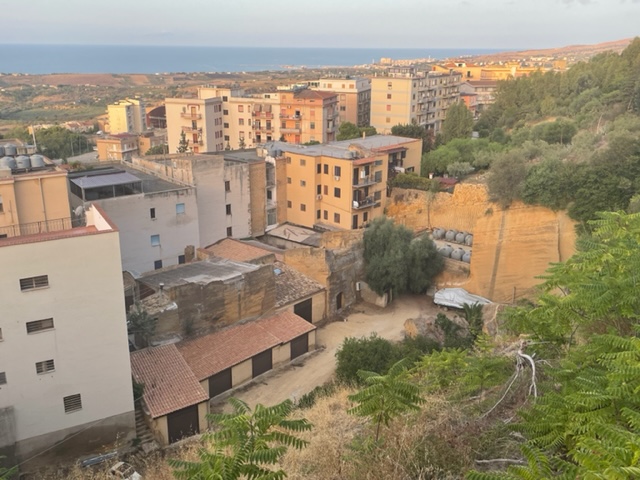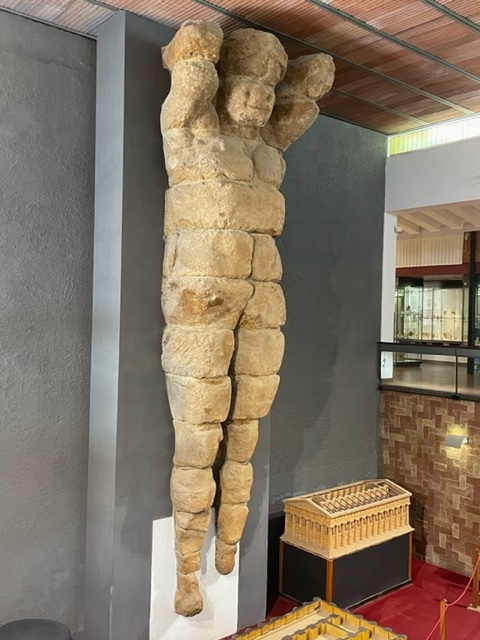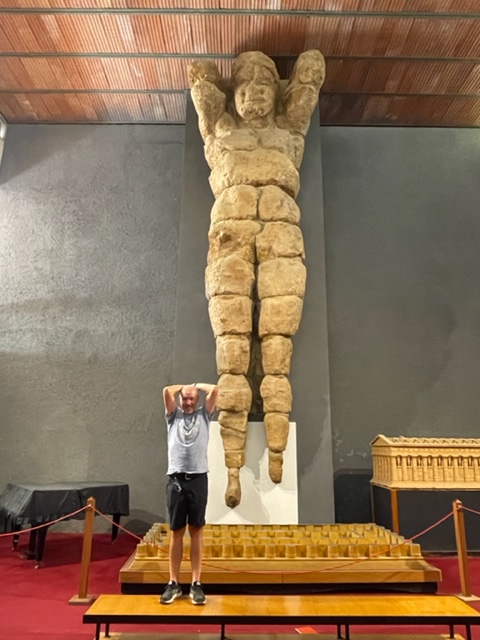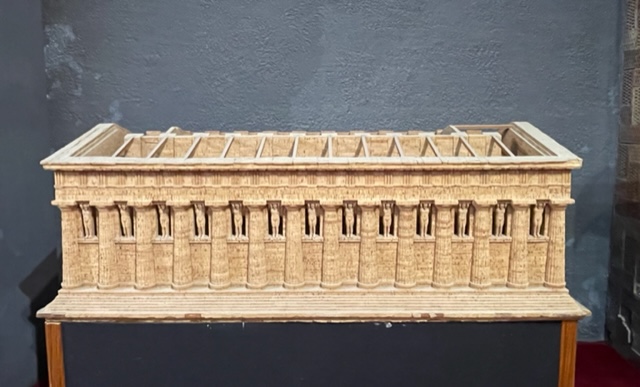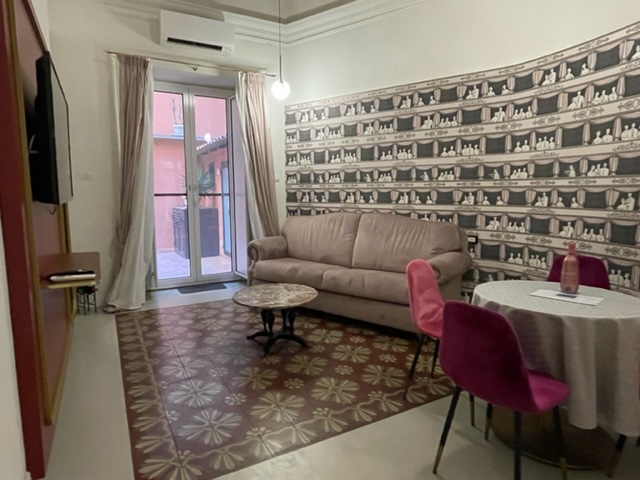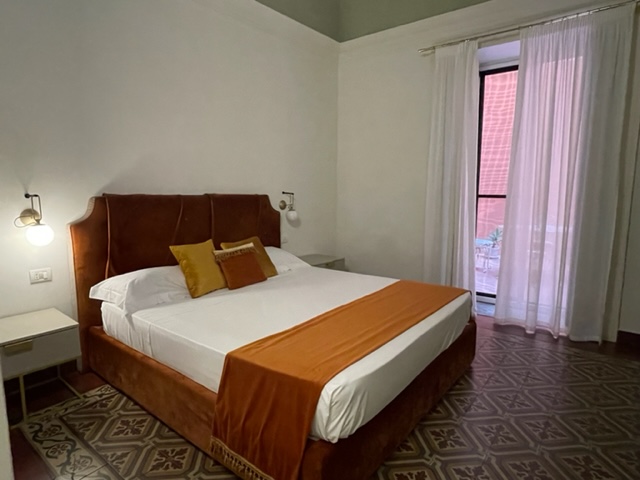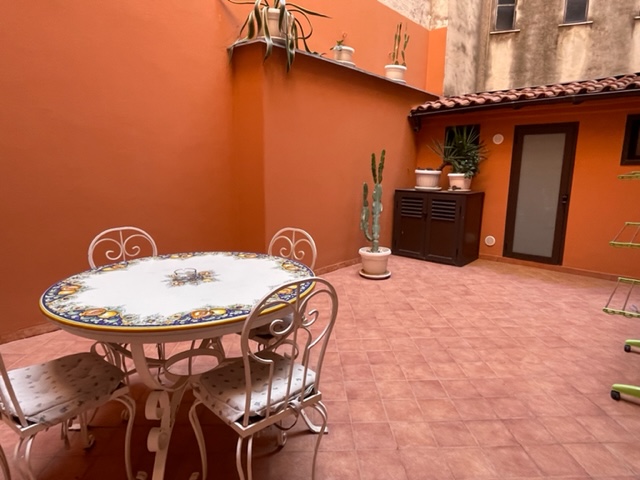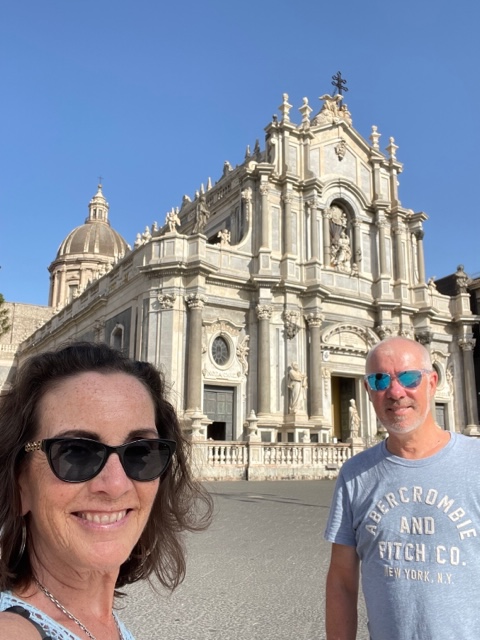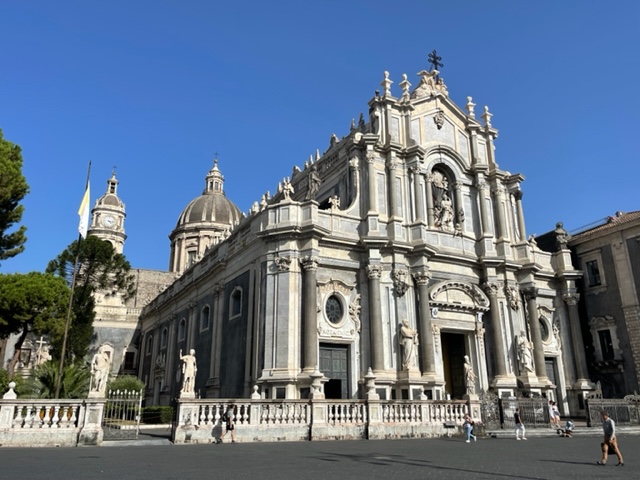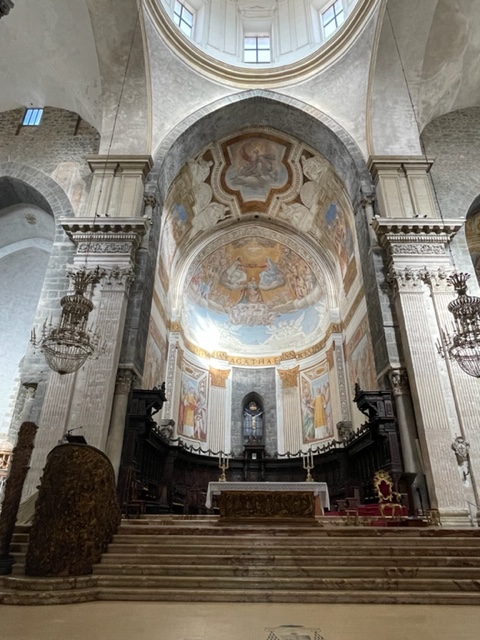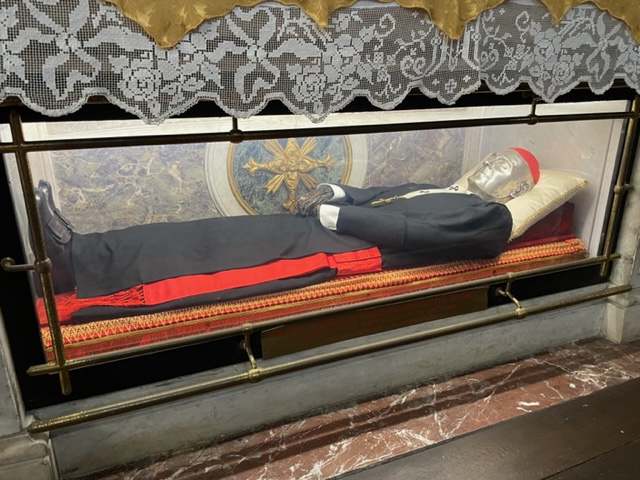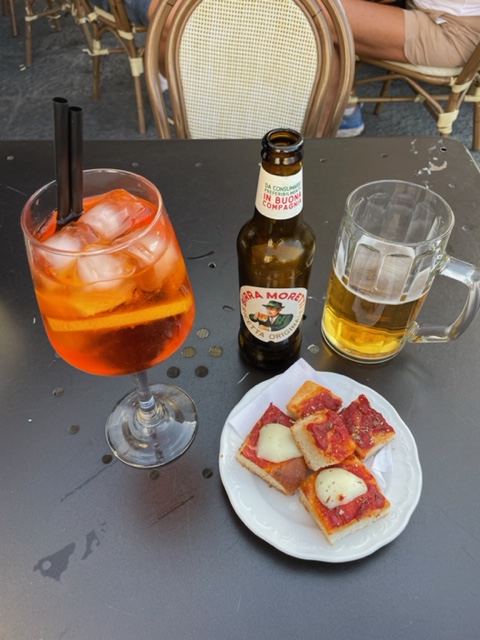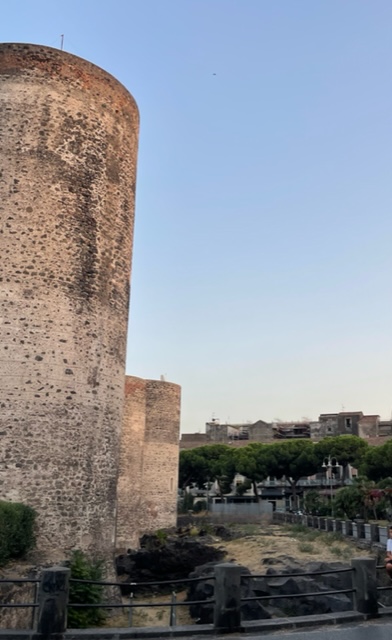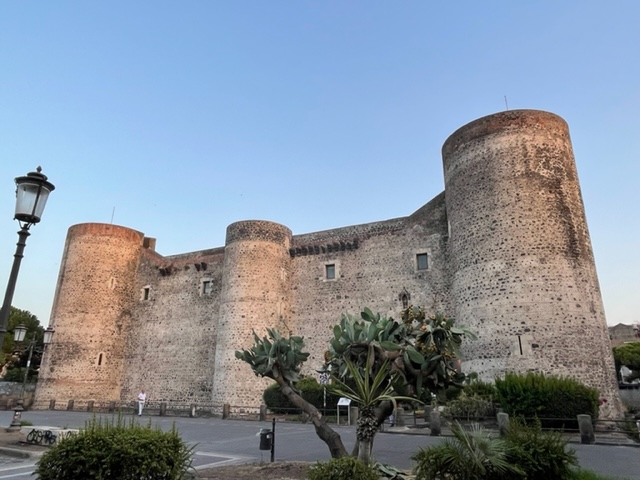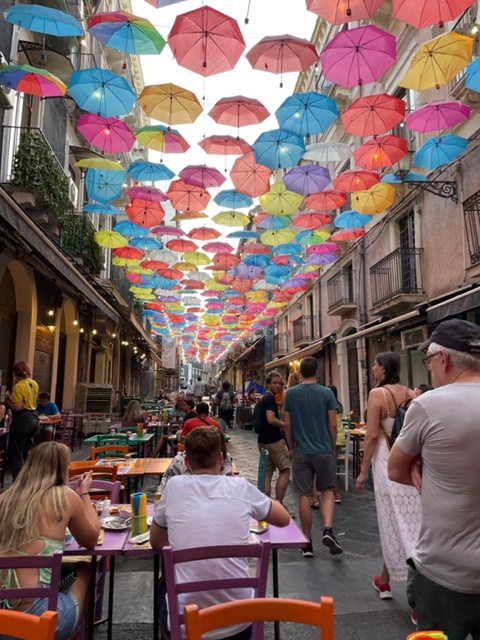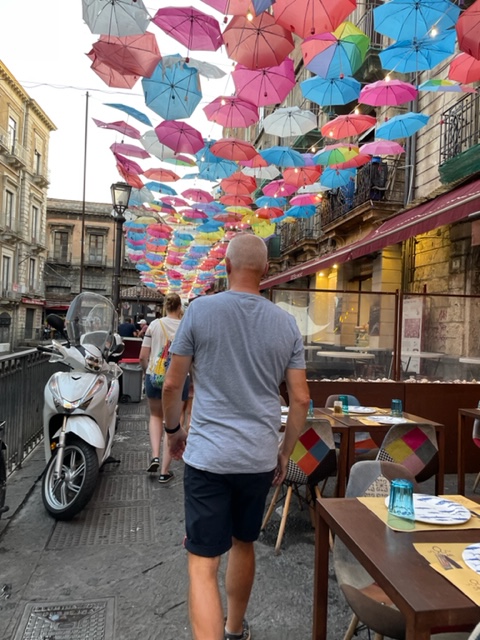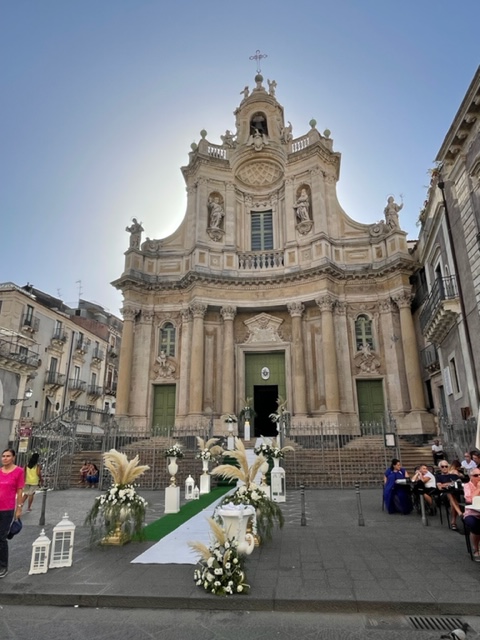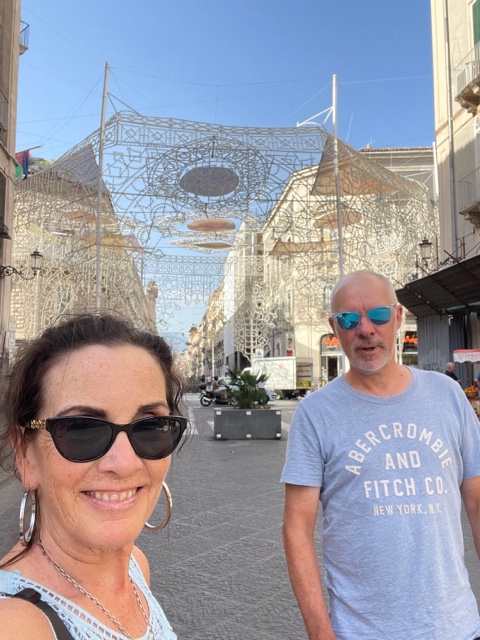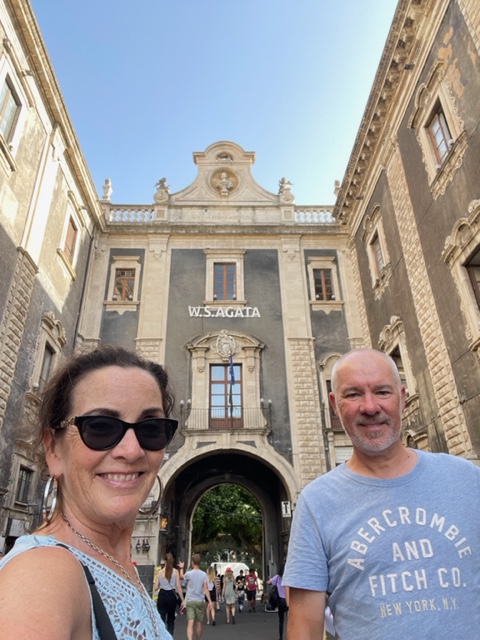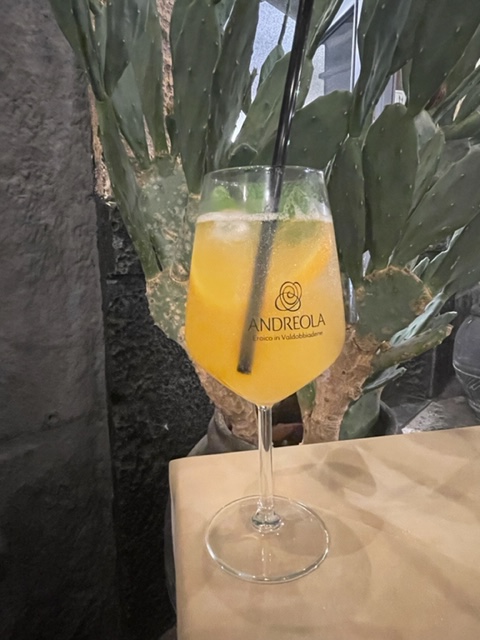Catania: Thurs Sept 15 – Sat Sept 17
Accommodation link.
It was another glorious morning and so went out for a walk along the promenade attached to the road our hotel was located on. ‘Promenade’ is probably too glamorous a term but it was wider than a footpath and afforded a decent view out to the Mediterranean.
The drive from Agrigento to Catania was about 2 1/2 hours and our check-in wasn’t until 3 pm so we filled in some of the morning with a visit to the Valley of the Temples Archeological Museum. The most interesting item in this museum was the recreation of one of the giant statues from the nearby Temple of Zeus, dated back to 480 BC. The Temple of Zeus stood around 35m high, 112m long and 52 m wide. This 7m Telemon, a male statue used in buildings as a support, was a bit less than half the height of the Temple’s columns and was recomposed in the 1820s. One can only imagine how impressive the original Temple of Zeus must have been.
We got on the road towards Catania by around 11.30 am and decided to stop at Enna, a small hilltop town that was along our driving route. Arriving into Enna at 1.15 pm landed us back in the siesta zone, so ,very little was open. We luckily found a small restaurant right where we parked the car and so were able to have a quick lunch.
The drive on to Catania was a rather pretty one and we were surprised by how many ‘Eucalypto’ were growing in this region and we wondered ‘how’ and ‘when’ they arrived? We got into Catania at around 3pm and met our host, Nicola, who gave us access to our apartment. It was in a great location, within the old town and right near the Piazza Vincenzo Bellini, yes the Bellini drink man as well as Italian Opera composer, who was currently being celebrated throughout the city.
We headed out at around 4pm to explore the local area before picking up our 6pm walking tour with guide, Agatha. She was a local of Catania and gave one of the best waking tours we ever have ever taken. She was passionate about her home town and gave a great overview of all the key moments of Catanian history. Agatha guided us around parts of the old town we would not have thought to traverse in our relatively short visit to the city, just two nights. The final stop of the tour was at the Roman Amphitheatre and apparently this was one of the largest in the Roman Empire. Just 1/10 is on display as the rest is buried under the surrounding buildings.
One thing that stood out as we traversed across the city was the huge number of cafes and restaurants; this is clearly a city where folk like to get out and live life! Mark has evaluated Catania to be the best of Sicily thus far. With hindsight it might have been better to allocate more time here; we really only had this one afternoon for Catania as we had a tour to Mt Etna the next day, our one full day in the area.
I’m so tired that I’m just putting down some of the facts I was able to recall from the tour.
- Catania has been settled since 8th century BC
- Catania: essentially means ‘of Mt Etna’
- The 1669 Etna eruption was on shoulder just 700 m in from the sea; this expanded Catania land mass by 2.5 sq km
- There is a lot of Edna’s volcanic basalt used in paving and building; one of the reasons it is so hot in Catania!
- The 1693 next eruption destroyed much of Catania and it was rebuilt and hence many buildings are the more modern baroque style
- St Agatha is patron of the city
- Vincenzo Bellini: famous for Pasta La Norma: a tomato, eggplant and ricotta dish as well as the Bellini and being a famous Italian Opera composer
- 3 main foods of Catania: Eggplant. Pistachio and horse meat.
- 10,000 umbrellas are erected over outdoor dining venues in city: to appeal to those who use Instagram and thereby promote the city.
- Castle: built by Frederick 11, circa 1250. He died that year.
- 320,000 population of Catania.
- University: dates back to 1434 and was the first in Sicily.
- Catania Cathedral: It was originally constructed in 1078–1093, on the ruins of the ancient Roman Achillean Baths, by order of Roger I of Sicily, who had conquered the city from the Ottomans. It was damaged over time and eventually rebuilt in 1693.
